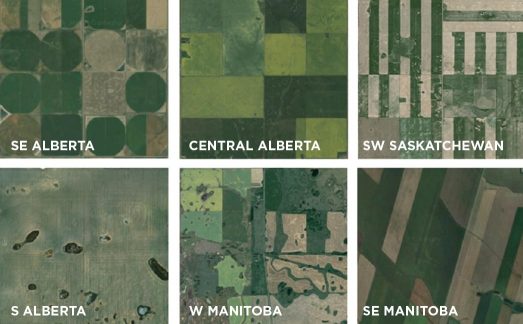Non-farmed spaces have real value
If you took time to add up the acres of non-farmed space on your farm, would you be surprised at the total? Non-farmed spaces include yards, shelterbelts, road allowances, fence rows, bluffs, pastures and wetlands. In a survey of 22 Saskatchewan fields, University of Saskatchewan researcher and associate professor Christy Morrissey found that 29 per cent of the area was non-cropped.
This sounds like a lot of wasted land, but these spaces often provide a net benefit to the farm. In a presentation at Canola Discovery Forum, Morrissey described new studies that support the “diversity-stability hypothesis” – the idea diversity increases yield and provides for a farm ecosystem that can better withstand pressures from drought, insects and disease. She referenced a U.K. study (Pywell et al, 2015) that took the lowest-producing three to eight per cent of land in various fields out of production and seeded them to diverse perennials. It increased the land’s yield relative to regional averages and with no net loss in profits.
Morrissey also pointed to an Iowa State University study (Schulte et al, 2017), which found that seeding 10 per cent of a field into perennial strips increased pollinator abundance by 3.5 times, native bird abundance by 2.6 times, phosphorus retention by 4.3 times and soil retention by 20 times.
Paul Galpern, an ecologist and professor in the Department of Biological Sciences at the University of Calgary, spoke at Canola Discovery Forum about his Alberta research. With students fanning out to survey fields throughout southern and central Alberta, Galpern found that canola yields are higher than average in fields that are more complex – meaning they have sloughs, bluffs, fence lines and other features that break up the landscape. This is not just a climate effect (we know that wetter areas have more sloughs AND higher yields) because Galpern made sure to compare results to less complex fields within the same region.

Galpern and his team found that non-farmed areas in Alberta provide habitat for hundreds of insect species that (1) increase pollination to boost yield and (2) feed on pest insects to save yield and reduce pest-management costs. These areas can also retain water to reduce yield loss from over-land flooding.
His statistical models suggest that some of the yield lost to a small non-farmed area can be made up by increased yields in the remainder of the crop. “This model is a simplification of the real world,” Galpern says. “I wouldn’t want farmers to change their practices on this alone, but what it does say is that non-farmed areas are unlikely to be bad for crops.” He looks forward to continuing the research at the field level to measure how much of a yield boost farmers can expect, and develop recommendations on the best way to get it.
One question that needs answering, he says, is which non-farmed areas are best for yield, improved profitability and other potential benefits like carbon sequestration? Are wetlands best? Or shelterbelts? Or tame pasture? And how much non-farmed area is enough?
Lisa Schulte’s Iowa State University study is posted at pnas.org. Another article, “Crop pests and predators exhibit inconsistent response to surrounding landscape composition”, which demonstrates the need for more research on the benefits of non-farmed spaces, is posted to the same website.
Galpern will apply for more funding to continue the research. Meanwhile, Morrissey is looking to ramp up her assessment of non-farmed areas, hoping to engage farmers in a “participatory science” research project.
The project, called the Canadian Prairie Agroecosystem Resilience Network (CPARNet), has the support of seven universities, 33 supporting organizations (including SaskCanola), 34 academics, 21 government and NGO scientists and nine international partners.
“CPARNet is a new way of doing research. Multiple researchers want to study the innovation that comes from farmers working the land and testing solutions. We want to move away from plot-level studies. We want farmers to try things in the real world and we’ll be there to study what they did and how it influenced yield, profitability and other environmental health factors.”
CPARNet will collect what worked, what didn’t work, and communicate results with other farmers. As recommendations become clear, she expects farmers will adopt them wholeheartedly – the same way they did with reduced tillage.
“The steps have to be seen to change the bottom line for farms, but once we get away from just thinking about yields and look at profits instead, the picture may change dramatically.”
New tech could be a big help. Field sampling, mapping and data management will help farmers identify non-profitable areas that could be turned back to perennial grasses and hubs for biodiversity. On-off sensors for applicators and GPS tracking make it easier to set aside non-productive areas. Autonomy of field machinery could see a trend to small machines that can run long hours and be better suited to dodge wild spaces.
“Whatever the research discovers, the steps have to be seen to change the bottom line for farms, but once we get away from just thinking about yields and look at profits instead, the picture may change dramatically,” she says. “When you puts the idea out there, farmers will think of ways to do it,”
If you have a grain or mixed farm in Alberta, Saskatchewan or Manitoba, and want to participate in CPARNet, email Morrissey at christy.morrissey@usask.ca.





